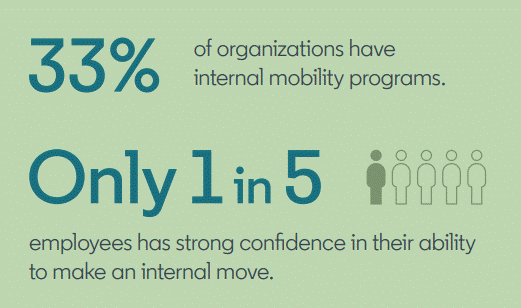LinkedIn Learning Unlocks 250 Free AI Courses for a Limited Time

[ad_1]
To help build AI literacy in the enterprise, LinkedIn is offering 250 AI courses for free through April 5th in tandem with its annual 2024 Workplace Learning Report, which highlights the state of learning and development and the skills needed for the future.
There’s little doubt that employees want to develop critical AI skills — four in five people want to learn more about how to use AI in their profession, according to the LinkedIn Learning report (Figure A). That high number was one of the surprise findings of the report, Jill Raines, director of product management at LinkedIn, told TechRepublic in an email interview.

How to access free AI courses through LinkedIn Learning
The 250 free AI courses are available in LinkedIn’s Learning Hub, but through April 5th, they will be free to everyone, whether someone has a Learning subscription or not. These AI courses span seven languages: English, Brazilian Portuguese, French, German, Japanese, Mandarin and Spanish.
“Jobs are changing on us, even if we’re not changing jobs,” Raines explained as to why these AI courses are being offered for free. “Our data shows the skills required to do the average job globally have been projected to change by 51% by 2030 from 2016, and the rise of generative AI is expected to accelerate this change to 68%. Talent leaders have an enormous role to play in helping people develop the skills they need to keep pace with this change and thrive in the AI era.”
The goal was to make sure LinkedIn’s free AI courses spanned various levels of proficiency, Raines added. “So whether you’re aiming to build general fluency in generative AI, empower your teams to make GAI-powered business investments, or upskill engineers to maintain and train AI models, there is content for you.”
Not surprisingly, the company has seen courses on generative AI “skyrocket in popularity,” she said; there has been a 5X increase year-over-year in the number of learners engaging with AI content. Some of the most popular courses about AI on LinkedIn this year are:
Companies with strong learning cultures see higher rates of retention
Employers must understand that providing skill and career development opportunities isn’t just a “perk” — it’s a business need, a powerful retention strategy, and the key to ensuring employees develop the right skills at the right time for the right roles, Raines said. Employers need to create a culture of learning and utilize L&D pros, she added.
And yet, recent LinkedIn surveys of U.S. executives found only 38% of companies say they’re currently helping their employees become AI literate. At the same time, 90% of organizations are concerned about employee retention and are providing learning opportunities, given that 85% of respondents are looking to change jobs this year.
“We are now actually able to tie desirable business outcomes to having a strong learning culture — a powerful tool for (learning and development) pros and executives making a business case for learning,” she said.
SEE: LinkedIn: 93% of organizations are concerned about employee retention
Raines pointed to the LinkedIn report’s findings that companies with strong learning cultures see:
- Higher rates of retention (+57%).
- More internal mobility (+23%).
- A healthier management pipeline (+7%) compared to those with smaller levels of commitment.
In addition, Raines said, “As skills needed for jobs change, it’s critical for employees to invest in their own skill building, and to be vocal about their own career development.”
Only one-third of organizations offer internal mobility programs
Another significant finding from LinkedIn’s report is that only 33% of organizations offer internal programs to help people advance their careers (Figure B). This may be the case because, even though the benefits of creating cultures that encourage internal mobility are clear, “it’s challenging to get right for many organizations,” Raines said. “In fact, only one in five employees has strong confidence in their ability to make an internal move.”

There are various reasons why, she added. According to recent LinkedIn research, hiring managers say the top three barriers to internal mobility are:
- Talent hoarding (40%).
- Lack of learning and development opportunities to equip people with the skills needed to pivot careers (39%).
- The organization is lacking an effective process for managing internal mobility (35%).
“The reality is there is a mindset shift that needs to happen. Creating a culture that encourages internal moves is everyone’s job — from executives to managers, to the employees themselves.”+
New LinkedIn Learning career development and internal mobility features
LinkedIn is “evolving” its products to better support internal mobility, bringing the company’s learning and hiring tools together to help employees raise their hands for internal jobs and help them get discovered by internal hirers, Raines said.
LinkedIn also rolled out new career development and internal mobility features to its LinkedIn Learning Hub designed to help talent leaders build the skills their organizations need the most. The features are Next Role Explorer, Role Guides and Learning Plans.
“We’ve learned the most effective approach to helping organizations build the right skills is by tying learning to employees’ individual career motivations,” Raines said. “In fact, learners who set career goals spend four times more learning than those who don’t set goals.”
With the new Next Role Explorer, “learners can see potential next roles they should explore based on common transitions that we see LinkedIn members make with their current (job) title,” Raines said. Then they can understand the skills needed to transition into those roles and tailor their learning journey based on specific career goals.
For example, Next Role Explorer visualization can show learners the path to promotion going from a “data analyst” to a “senior data analyst” and the skills they need to learn to progress, she said.
“Employees can also understand what a career pivot might look like, as we recommend new roles based on LinkedIn members who have made a similar job change. So if you’re a data analyst wondering what skills gaps you need to fill to become a software engineer, we can help you on that journey,” Raines said.
Next Role Explorer also points employees to customizable Role Guides to help them understand the specific skills needed to succeed in a role, Raines said. From there, employees will be able to get personalized Learning Plans designed to help them track their progress and close the most critical skill gaps to advance their careers.
In addition, the company is giving employees new ways to opt in to share their interest in open internal roles across LinkedIn Jobs, LinkedIn Learning and on mobile devices. From LinkedIn Jobs, employees can now receive alerts about new internal roles that open up and express their interest. All of these signals go directly into LinkedIn’s recruiter tool, so hiring teams can see internal candidates’ interest immediately, she said.
On LinkedIn Learning, employees can now find all of their employers’ internal open roles, and be directed to the top skills they’ll need, as well as recommended courses to build them, Raines said.
LinkedIn Learning Hub is available to organizations with 20 seats or more, and prices vary depending on their needs.
Methodology for LinkedIn’s 2024 Workplace Learning Report
LinkedIn said it collected billions of data points generated by its 900 million members in more than 200 countries on the site today. Some of the analysis came from LinkedIn’s fastest growing skills and the impact of learning culture data.
[ad_2]
Source Credit




